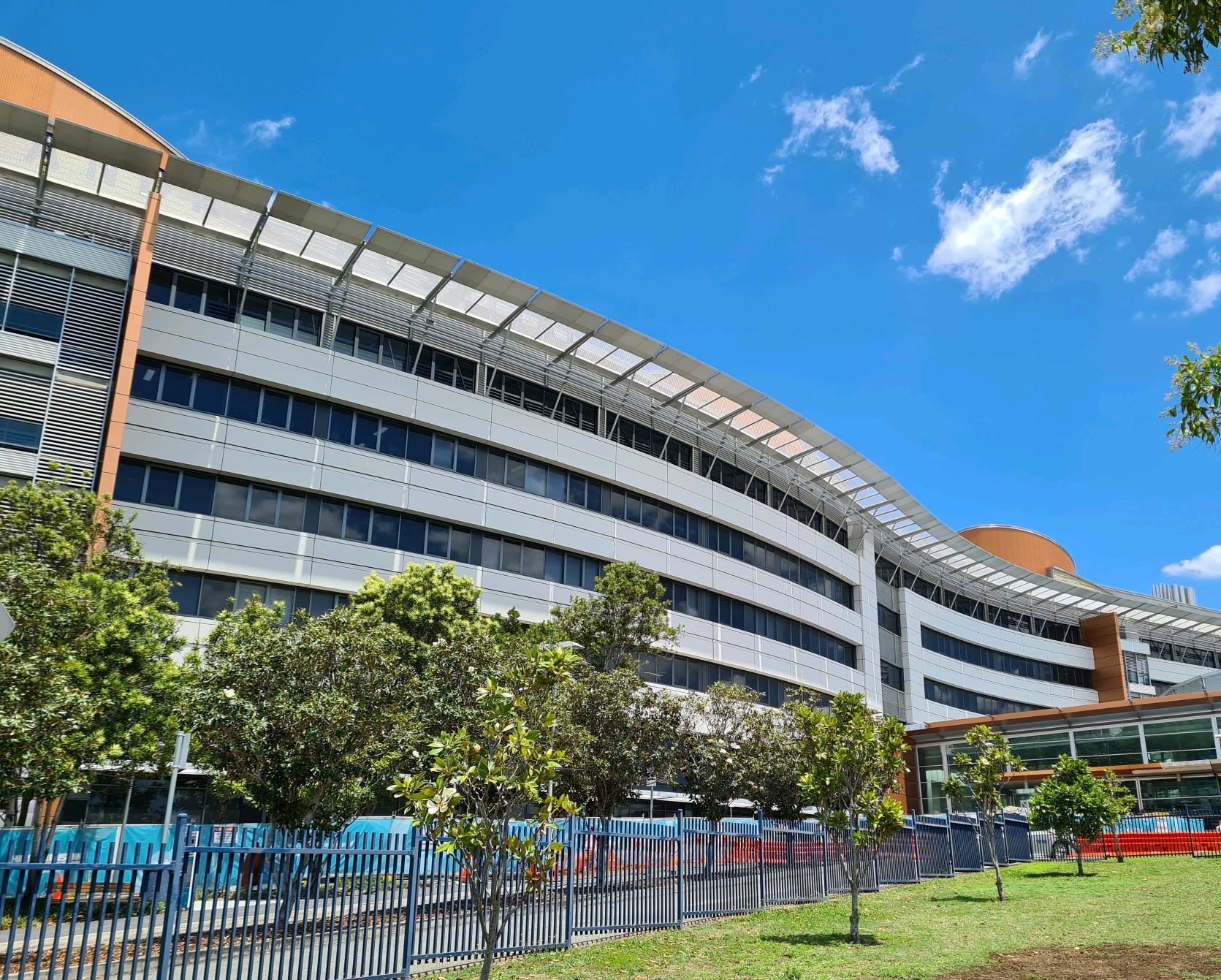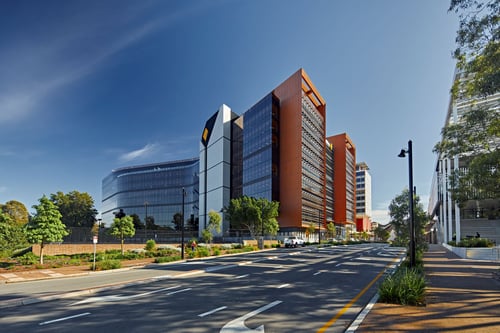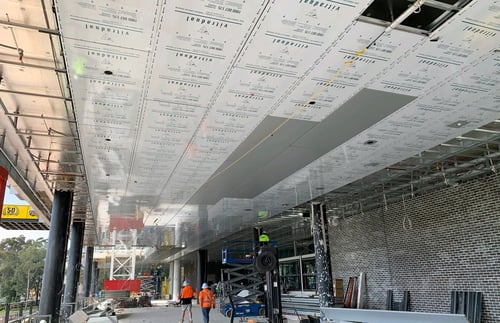In recent years, Australia’s building regulation landscape has evolved in response to concerns about ‘at-risk’ products being used in the construction supply chain. Re-drafted legislation at federal and state levels has necessitated the replacement of some products – and the re-engineering of others – to ensure all components are ‘fit-for-purpose’ and compliant as used within any building project.
The Queensland Government reacted swiftly to the challenges of problematic products by establishing its NCBP (Non-Conforming Building Products) Audit Taskforce in mid-2017.
Locally installed ‘at risk’ cladding removed
As non-compliant cladding on all government and non-government buildings was a priority, the NCPB taskforce soon identified Woolloongabba’s Princess Alexandra Hospital (PAH) – which had locally sourced and installed non-conforming cladding on its façade – as a priority for rectification.
The problematic polyethylene (PE) cladding was discovered – not by an open declaration by those who had fitted or recommended its use, but – by a random-sampling test of PAH’s cladding, with prompt confirmation its PE-core façade (by a global manufacturer) was unsuitable. The building remediation began straight away.
Fairview key to PAH rectification
The choice of supplier and product to remediate this iconic healthcare building in Brisbane was not taken lightly by QLD Health and Hutchinson Builders. As this project was under serious public and media scrutiny, an extensive and independent tendering process was launched to find a safe substitute cladding.
Not only did the efficacy and safety of any replacement’s fire credentials need to be beyond reproach but other performance factors – like hail and weather resistance, product defect rates (oil canning, paint peeling), colour availability and product quality – were key to the final choice of remedial product and installation system chosen.
The Phase 3 tendering process for solid aluminium panels begun at the end of 2018, with Fairview’s 3mm Vitradual cladding winning out in March 2020 – thanks to critical, expert input from ABS Façades and the entire Fairview façade remediation team.
Vitradual – a very solid solution
Hutchinson’s thorough quality assurance research, comprised a detailed documentation review, manufacturing site visits plus many more quality control plan submissions. Product reliability was further assessed through four extensive hail performance tests. With QLD prone to thunderstorms, cyclones, rain and hail, an assurance of product durability in adverse weather was critical.
After two years of quality assurance testing on multiple competitive cladding solutions, 3mm Vitradual in Pearl Grey, Oyster, Thriller Grey, and Copper Metallic finishes was specified for the 21,000sqm rectification of PAH. Vitradual is a 3mm non-combustible solid aluminium cassette façade cladding system. Suitable for Type A and B constructions, this product is a high impact, solid panel which can be fabricated, curved, and rolled. Additionally, the pre-finished large format cladding panels use the highly recognised PVDF Kynar 500® paint which is known for its high durability in providing optimum resistance to weather and industrial pollution.
Weathering the storms
Remediation of the main Woolloongabba hospital – amid almost hostile competitive pitch conditions – is a true testament to the calibre of Vitradual, and the entire project team involved.
Fairview feels privileged to have been involved in the rectification journey of this very monumental project and very proud to have Vitradual chosen as ‘best-in-class’ materials in the remediation of the PAH facade.




